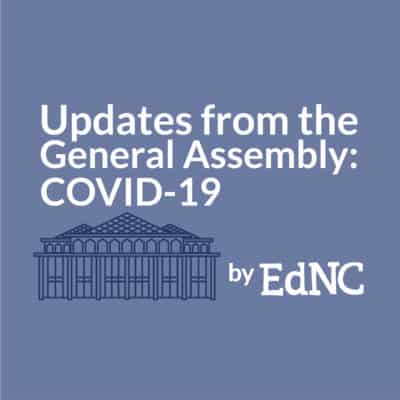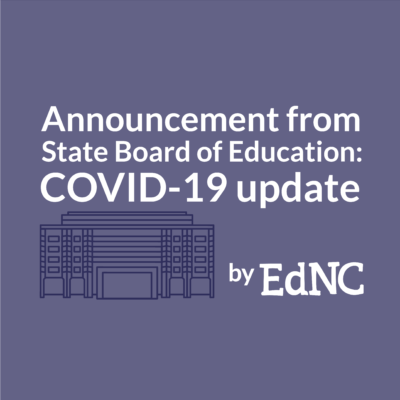The State Board of Education on Thursday approved operational guidance for schools reopening in the fall that draws on guidance released by the state Department of Health and Human Services (DHHS) earlier this week.
The 116 page guide for school districts covers the requirements and recommendations from DHHS as well as things for schools to consider as they try to put together their plans, including sample scheduling options.
“This is a living document,” said state Superintendent of Public Instruction Mark Johnson in a press release. “It’s not set in stone. Our goal is to provide a roadmap that supports reopening schools to make this enormous task less difficult for our districts, schools and communities.”
Here is the full guide.
Here is a summary document which schools and districts can use to navigate the larger document via links and photo strips.
The document states that with the exception of measures which are considered required, districts and schools have a lot of flexibility this fall.
“Public School Units (PSUs) have the authority and the flexibility to meet their local needs and be responsive to their communities. As impacts of the COVID-19 pandemic evolve, the SBE and NCDPI will continue to provide updated guidance and recommendations to districts and schools on navigating the academic, social, and emotional effects on students and employees,” the document states.
State Board Chair Eric Davis praised Department of Public Instruction (DPI) staffers who put together the plan voted on by the Board. He also praised the user-friendly structure and format of the documents, as well as the close coordination of DPI with DHHS.
“You have captured the can-do spirit of North Carolina to care for and educate our children,” he said.
That sentiment was echoed by multiple State Board members.
David Stegall, deputy superintendent of innovation and one of the staffers who worked on the plan, said that this isn’t meant to be the final word in schools reopening. Guidance may change as the situation on the ground with COVID-19 does.
“This is not the finish line,” he said. “This is our new beginning line.”
DPI will come back to the State Board in July with policy recommendations for implementation of the guidance voted on today.
Earlier in the week at a press conference, Gov. Roy Cooper unveiled the DHHS guidance on reopening schools in the fall.
The StrongSchoolsNC Public Health Toolkit (K-12) includes both requirements and recommendations for reopening schools, as well as three different reopening scenarios that the state is asking schools to plan for.
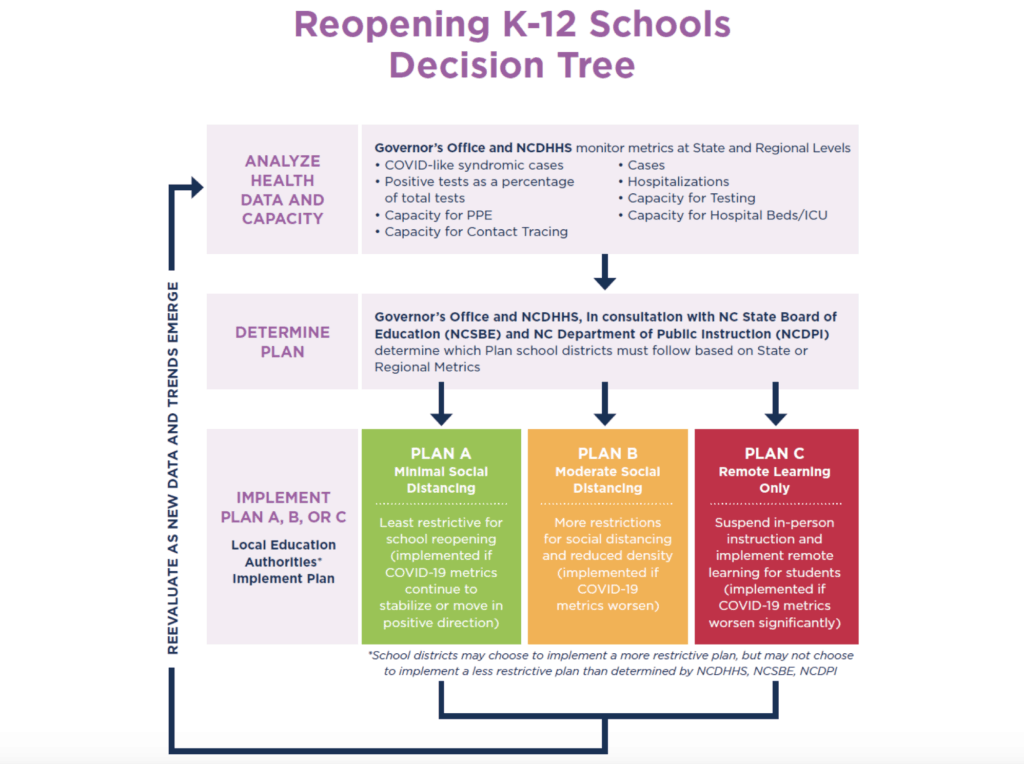

Under the most optimistic scenario, schools would plan for only minimal social distancing. All students could return to school. That plan would go into effect if the metrics surrounding COVID-19 “continue to stabilize and/or move in a positive direction.”
Under the next scenario, schools would need to plan for moderate social distancing. Schools and buses could only be at 50% occupancy and six feet of distance between people would have to ensured at all time. This plan would need to happen if COVID-19 metrics get worse and additional restrictions go into place.
The worst-case scenario would require schools to plan for remote learning alone. That would happen if the metrics are significantly worse, “enough to require suspension of in-person instruction and implementation of remote learning for all students.”
The governor and DHHS will decide what scenario schools around the state will actually have to implement in the fall by July 1.
Lt. Gov. Dan Forest, a member of the State Board, asked if the decision by the governor will require concurrence by the Council of State, of which he is a member. Davis said that he would have to defer to the governor on that. Forest has been critical of Cooper’s handling of the COVID-19 pandemic and is running against him for governor in the November elections.
Forest asked about the metrics that would be used to determine what plan schools will go into. Susan Gale Perry, chief deputy secretary of DHHS, said it is the same metrics that are being followed by the governor and DHHS — things such as total number of cases, percent positive, and hospitalizations.
Forest continued, asking what specific goal would elicit a need for one plan over another. Perry said there is no set number that is considered a threshold.
Forest said he couldn’t vote for the recommendations without clear goals. He was the only one who voted against adopting the guidance.
“We’re asking today to vote on these recommendations for the entire state, but nobody seems to know what the goal line is,” he said.
Board member Amy White echoed some of Forest’s concerns, though she said she would vote for the plan. She also said that enormous pressure is being put on educators under this plan to be responsible for the health and safety of students.
The toolkit from DHHS lays out both requirements and recommendations related to schools reopening. For example, here are requirements related to social distancing and exposure minimization.
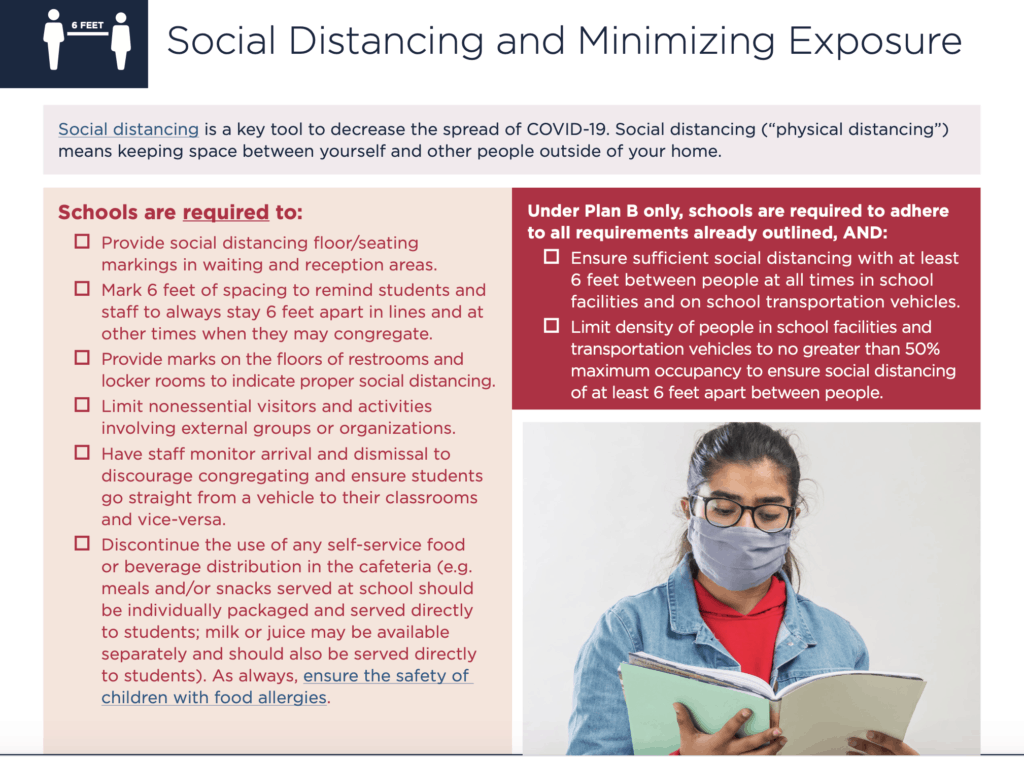

Here are the recommendations under that heading.
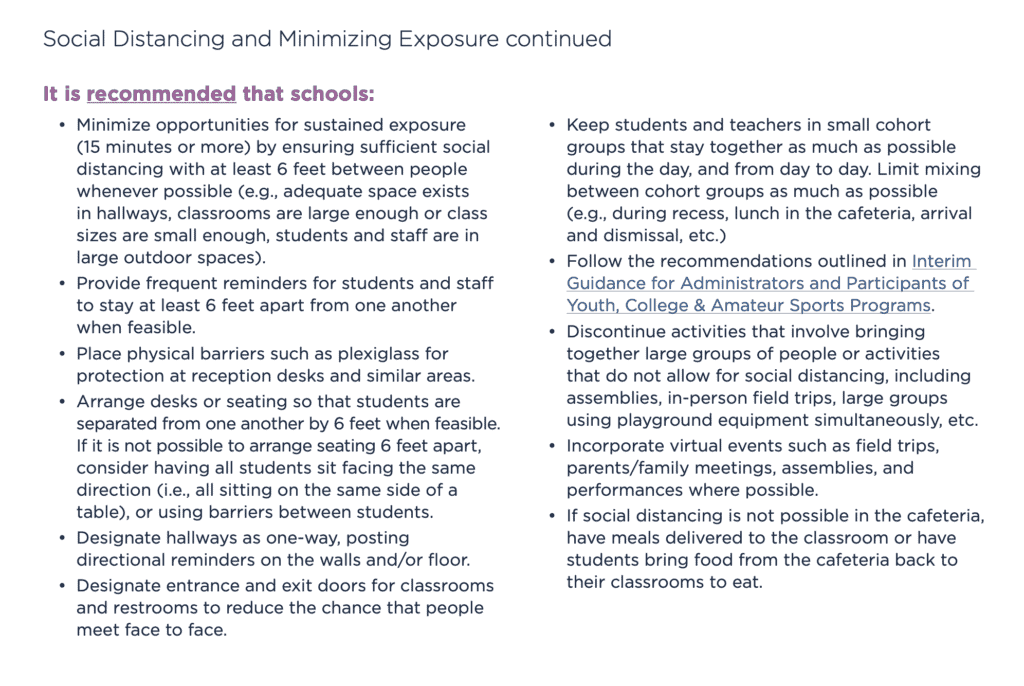

Under DHHS’ guidance, cloth face masks aren’t required but are strongly recommended.
See a full list of the requirements and recommendations in the tool kit below, as well as a video of the governor’s press conference from earlier in the week.
Superintendent Johnson announced the creation of a task force to examine school reopening in late April. In addition to the list of members below, it included advisors such as “district CTOs and CAOs, thought-partners from education-focused organizations, and teachers, principals, parents, and students,” according to a press release.
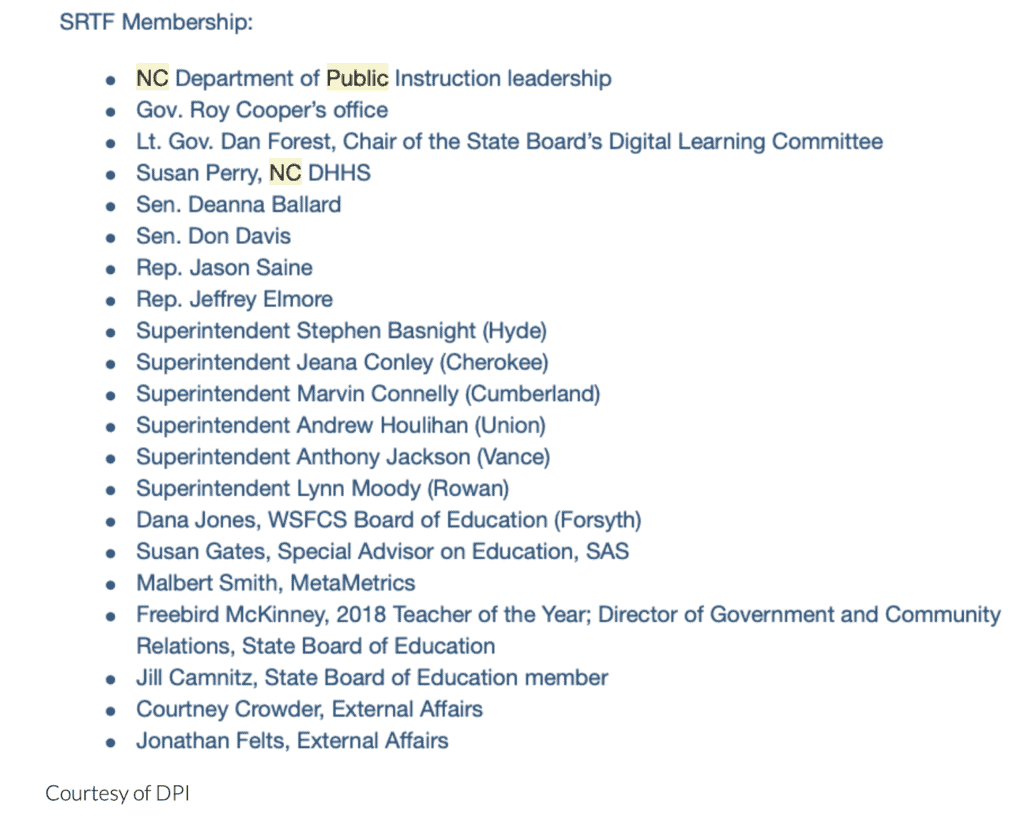

Jen Mangrum, the Democratic candidate for state superintendent of public instruction, also pulled together her own task force to look at how best to reopen schools. This week, she released recommendations that came about as a result of its meetings. In her release, she was critical of the task force that Johnson formed.
“I imagine the task force members had a great wealth of experience and knowledge; however, the task force had only one teacher on the team. In order to hear from educators on the front lines and to give more educators a voice, I pulled together a small group of teachers, active and retired, from across the state to make suggestions for reopening based on their experience,” she wrote.
She her task force’s recommendations below.
Johnson is not running for reelection in the fall. He ran in the primary for lieutenant governor but lost. Mangrum is going up against Republican Catherine Truitt for the superintendent position.
The Southern Regional Education Board (SREB) has also released a K-12 Education Recovery Task Force playbook that is a “working document based on discussions of state leaders and local-level educators.”
It includes “actions and questions for states, districts, and schools to consider as they develop and adjust reopening plans.”


